Understanding Alkalinity In Your Pool
Everything You Need To Know About Pool Alkalinity
Has your pool water turned cloudy? Or, did you notice some scaling on the sides of your spa pool? This is an indicator that your pool’s pH level is not what it should be. We understand that keeping all the chemicals in your pool balanced can get quite tricky. More so, when pH and alkalinity levels can be quite unstable with the slightest intrusion of foreign materials (debris, gardenia, lotions) in the pool water. But it is important to maintain the right chemistry of your pool water. Failure to do so can put you at a health risk. So, without further ado, let’s learn everything there is to know about the alkalinity levels in your pool.
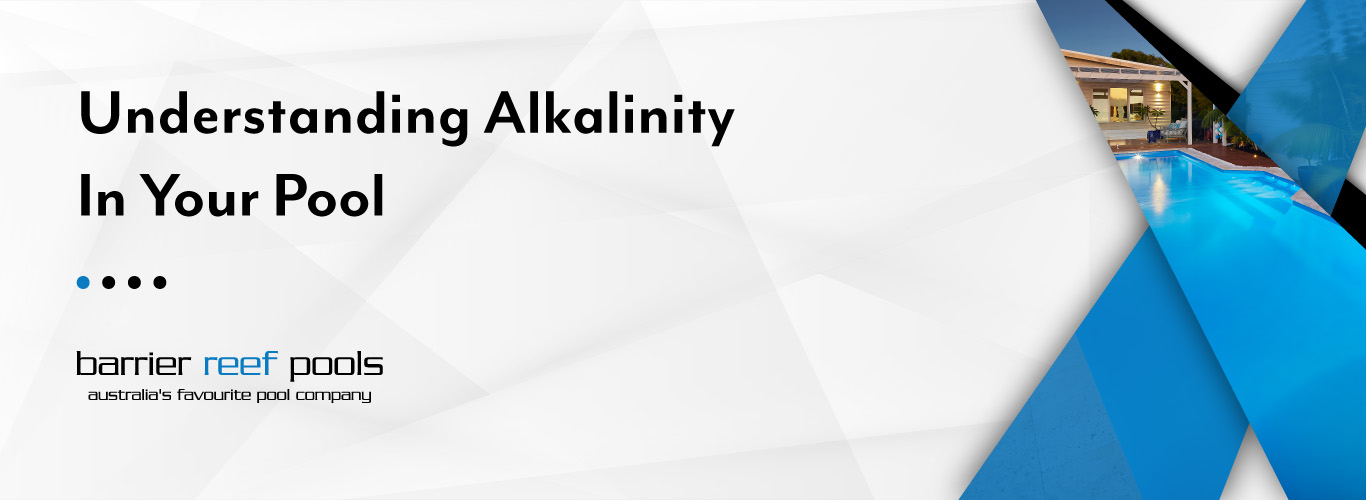
- Last Modified April 23, 2025
What Causes Low Or High Alkalinity In My Pool?
Causes For Low Alkalinity
Excess urine and perspiration in the pool water can bring the alkaline levels of your pool down. Another common reason is when your pool water gets flooded with rainwater due to a heavy downpour. Using chlorine tablets in excess is also said to cause a drop in the alkalinity levels as they contain a low pH level. Lastly, use of too much dry acid can have a negative impact on your pool water.
Causes For High Alkalinity
There are three main reasons behind high alkalinity levels of your pool. Firstly, when the oil, sunblock or lotion you use during a swim get mixed into the water. Secondly, if your pool water source has a high alkaline content. Lastly, some pool owners may shock their pool too often after hosting a pool party. That can throw off the alkalinity levels in your pool.
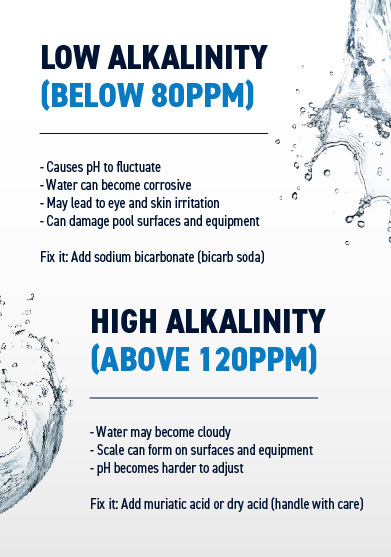
Now that we see what causes total alkalinity, let’s look into more of what pool alkalinity is.
Understanding Pool Alkalinity
Alkalinity refers to the presence of alkaline substances such as bicarbonates and hydroxides in the pool water. It measures your pool water’s ability to neutralize bases and acids while maintaining the right pH level. Alkalinity can be measured in parts per million (ppm) which is equal to one milligram per liter of water. The recommended alkalinity level for a pool is 80 to 120 ppm.
If the alkalinity level falls below 80 ppm, the water becomes too acidic. Conversely, if the alkalinity levels rise above 120 ppm the water becomes too alkaline. Both these situations have side effects, which is why it becomes important to balance your pool’s alkalinity and pH levels.
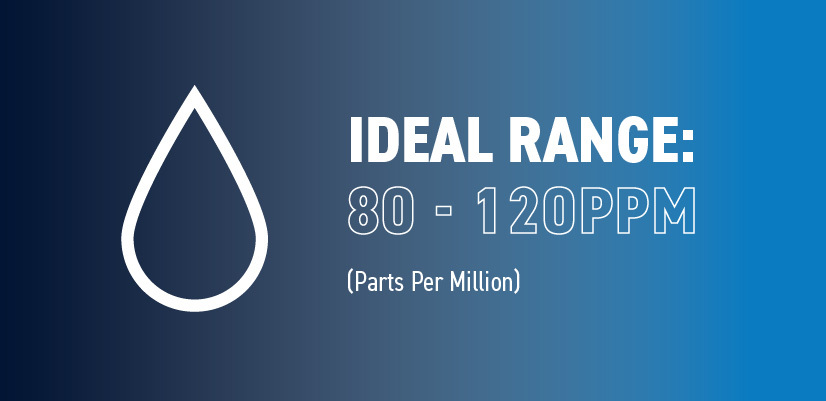
Are Alkalinity And pH The Same Thing?
Often, many pool owners confuse pH with alkalinity. In reality, they are not the same, but they work very closely together which can be the reason for common confusion. When the pH levels of your pool are decreasing, the alkalinity will see a similar fall. Conversely, when the pH levels of your pool increase, it raises the alkalinity levels too.
The pH levels help you to determine how alkaline or acidic the water is on a scale of 1 to 14. The lowest on the scale stands for extremely acidic and the highest is extremely alkaline. Alkalinity measures in parts per million the actual alkaline substances present in your pool water.
Let’s understand this better with the help of a few examples:
Bleach has a pH level of 13 and is very alkaline. Whereas, lemon juice has a pH level of 2 and is very acidic. Water has a pH level of 7 and is neutral on the pH scale.
The important thing is to not get overwhelmed by the scientific mumbo jumbo. You don’t have to understand the definitions of pH and alkalinity. All you have to do is monitor the parts per million levels in your pool using a pool testing kit which makes everything easy for you.
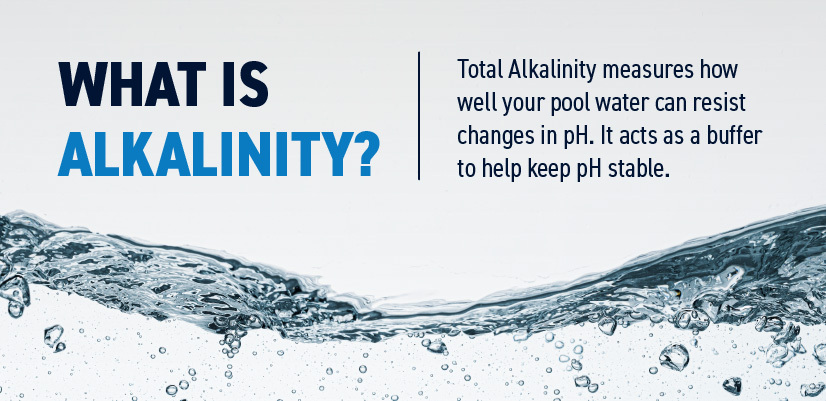
What Are The Adverse Effects Of Low And High Alkalinity?
Let us look at the after-effects of an imbalance in your pool chemistry:
Negative Effects Of Low Alkalinity
- Wear and tear of the surface of the pool
- Greenish pool water
- Burning of the eyes and skin
Negative Effects of High Alkalinity
- A build-up of foreign materials on the pool’s surface
- An extremely high pH level that may require too many efforts to bring down
- Staining and corrosion of pool equipment
How Can I Raise The Alkalinity Level Of My Pool?
By mixing a simple solution in your pool water you can raise its alkalinity levels if it goes lower than the recommended pool alkalinity range. Sodium Bicarbonate, commonly known as Baking Soda is a helpful component in raising the alkalinity levels of your pool. Follow the step-by-step procedure as follows:
Test
Like we mentioned earlier, you can easily get a pool testing kit from the market. Use it to measure the current alkalinity levels in your pool water. You could even use a pH sensor for the same. If the levels are below 80 ppm, it is time to prepare the solution.
Buy Baking Soda
Consider starting with a 5-pound carton for treating your pool water. Depending on your pool size, the quantity can increase accordingly. It is a better choice to consult your pool supplier for purchasing the baking soda as they will guide you about the quantity you will need.
Right Quantity
Remember to not add the whole quantity of baking soda at one go. Start with half or three-quarters and slowly add more in portions if the alkalinity levels are still low. Also, don’t forget to dilute the solution before you mix it in the pool water. You will have all the instructions on the package.
Retest
It is recommended to wait for around six hours (and not more than twenty four hours) to retest the alkalinity level of your pool. If it is still on the lower end, you can repeat the entire process step by step to raise the level.
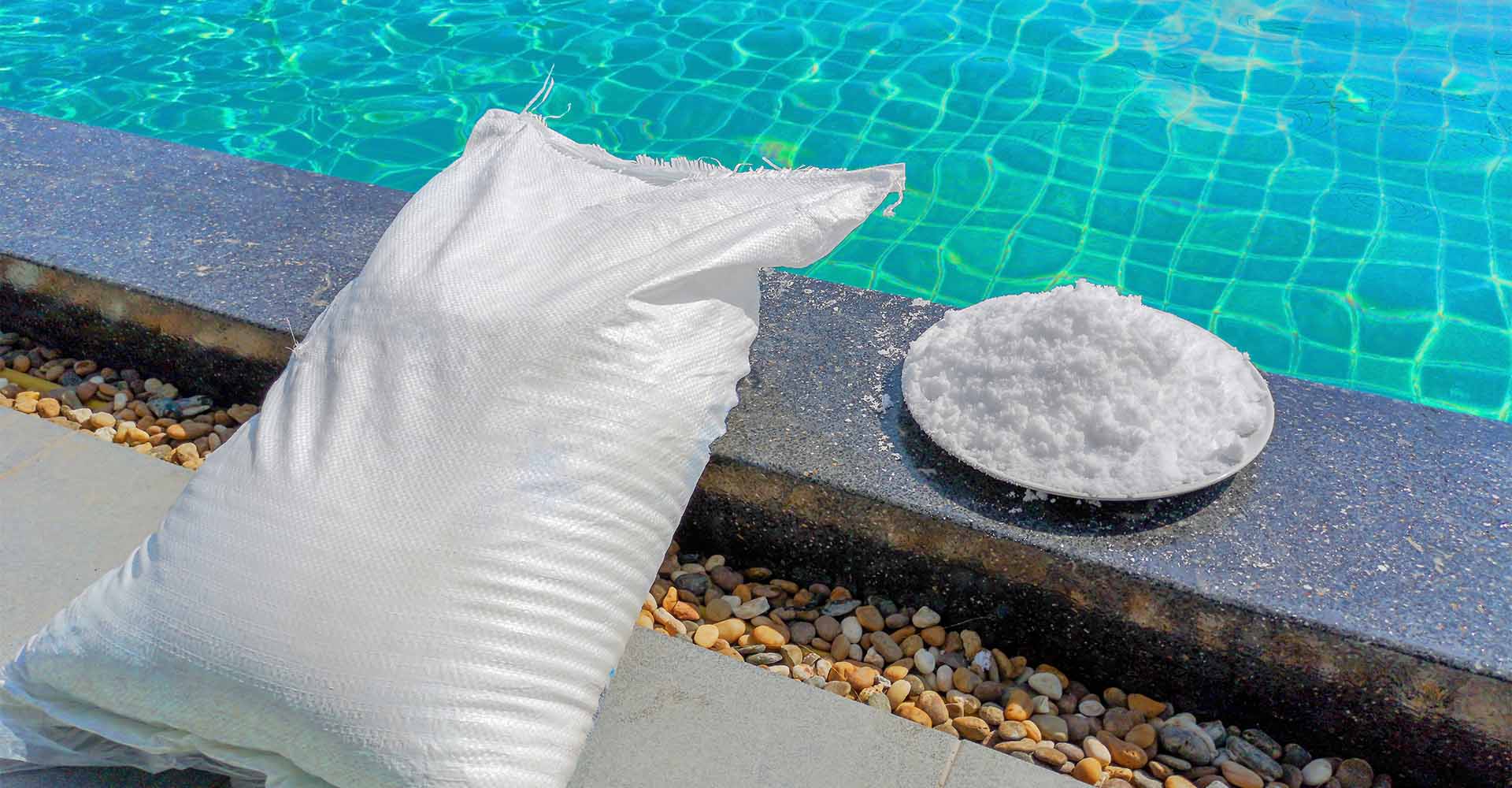
What If I Want To Bring Down The Alkalinity Level In My Pool?
Lowering the alkalinity levels in your pool is just as easy and involves no rocket science. You can use dry acid or sodium bisulfate for it. Turn on the water pump and ensure its running at the maximum level. Spread the dry acid evenly across the pool and allow the particles to dissolve. Keep monitoring the pH levels regularly using a pH sensor to add more, if needed.
Note: Be cautious of the amount of dry acid you use in the pool water. Any excess quantity runs the risk of damaging the surface of your pool.
Closing Thoughts
Maintaining the right balance of chemicals in your pool is a continuous process. With every use, foreign material such as oil, sunblock, debris or leaf litter can alter the water’s chemistry. It becomes pivotal to monitor the total alkalinity and pH levels of your pool to ensure it is hygienic for a swim. Keeping track becomes simple when you regularly test and maintain your pool water’s chemistry.
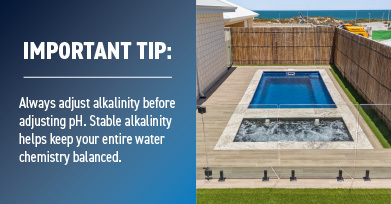
If you are still unsure about how to keep your pool water healthy, get in touch with us. Our experienced pool builders have been installing and maintaining pools of different sizes for many years. We would be happy to be of service.
If you have any other pool-related inquiries, give us a call today!
Frequently Asked Questions About Pool Alkalinity
To lower alkalinity, you can add muriatic acid or sodium bisulphate to the water. Start with small amounts, test the water regularly, and make adjustments as needed.
To raise water hardness, add calcium chloride to your pool. Follow the manufacturer’s instructions for the correct dosage based on your pool size and current hardness levels.
It’s best to wait at least 30 minutes to an hour after adding baking soda before swimming, allowing it to fully dissolve and circulate in the water.
Low pH and alkalinity can be caused by factors such as heavy rainfall, the use of acidic chemicals, high levels of bather waste, or the introduction of fresh water without proper balancing.
High alkalinity indicates that the water has a higher concentration of alkaline substances, which can lead to pH fluctuations and make it more difficult to maintain balanced water chemistry.
Excess alkalinity can result in cloudy water, scaling on surfaces, and difficulty in adjusting pH levels, which may require additional treatment to correct.
